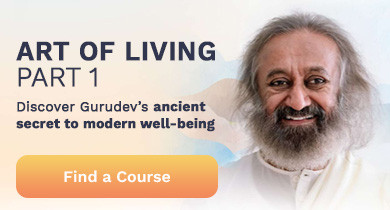
Are you using your lungs to their full capacity? Or is your breathing relatively shallow?
Diaphragmatic breathing engages your diaphragm, expands your breath, and increases the efficiency of your lungs. This helps you to breathe deeper and longer. Diaphragmatic or belly breathing has many benefits particularly in relaxing and calming your mind. It also serves as a foundation for many other relaxation techniques including yoga and breathing exercises called pranayama.
What is the diaphragm?
The diaphragm is the major muscle of respiration. Physically, the diaphragm is a large, dome-shaped muscle located at the base of the lungs, separating the chest and abdominal cavities. It contracts and relaxes continually, rhythmically, involuntarily on its own. This movement facilitates breathing—inhalation and exhalation. Diaphragmatic breathing exercise, which involves some conscious voluntary movement of it, helps to expand the diaphragm’s capacity and full functioning for optimum breathing.
What is diaphragmatic or belly breathing?
Breathing is a natural process that usually occurs without conscious effort. When a person inhales, their diaphragm contracts and flattens, creating space for the lungs to expand and fill with air. When a person exhales, the diaphragm relaxes and moves back to its original dome shape, helping move air out of the lungs. However, many people tend to breathe in a shallow manner. This way of breathing does not engage the diaphragm very much.
Diaphragmatic breathing or abdominal breathing involves consciously fully engaging the abdominal muscles and diaphragm when breathing in order to take deeper breaths. This means actively pulling the diaphragm down with each inward breath. A person will notice their belly or abdomen rising and falling. They will also feel an expanding or stretching sensation in the abdomen, rather than solely in their chest and shoulders. In this way, diaphragmatic breathing helps the lungs fill more efficiently.
How to perform the diaphragmatic breathing technique?
Below is the basic step-by-step process for diaphragmatic breathing. As a beginner, you may try this first in a lying-down position. That might be easier.
Sit or lie down straight on a comfortable, flat surface. If there is any strain in your back, keep your knees bent. Relax your body.
Relax your shoulders, head, and neck by gently rolling them a couple of times.
Put one hand on your upper chest and the other hand on your belly.
Take a long, full, easy breath in through your nose and fill your lungs up completely
As the lungs get fully filled, the diaphragm moves down, expanding your abdomen and sides of the waist. Your chest remains relatively still. Your hand on your belly gently rises.
Exhale slowly through pursed lips (as if your lips are holding a straw in your mouth) for the count of four or six. Feel the abdomen narrowing and gently getting pulled towards your spine. The hand that is resting on your belly will gently come back to its original position.
Repeat these steps 10-15 times for the best results.
How often should I practice this exercise?
You can do this exercise either when you want to relax or when you feel your breathing is too shallow and constricted. Practicing day after day continually will make the biggest difference. Gradually increase the amount of time you spend doing this exercise. Once you get comfortable with this diaphragmatic breathing technique, for best results you can move into a regular breathing exercise practice of pranayama.
Benefits of diaphragmatic deep breathing exercise
Diaphragmatic breathing helps a person engage the diaphragm fully while breathing. This may provide a number of health benefits, including:
strengthening the diaphragm
improving stability in the core muscles
slowing the breathing rate
lowering heart rate and blood pressure
reducing oxygen demand
promoting relaxation
What conditions can it help with?
Diaphragmatic breathing may be beneficial for a range of conditions. The following sections will outline these in more detail.
Stress and anxiety
A 2017 study notes that diaphragmatic breathing reduces levels of the stress hormone cortisol in the body. Because of this, it may help alleviate symptoms of anxiety and stress in healthy adults as well as in people with post-traumatic stress disorder.
Chronic obstructive pulmonary disease
The term chronic obstructive pulmonary disease (COPD) refers to a group of lung conditions in which airways within the lungs become damaged and inflamed affecting a person’s breathing due to obstruction. The diaphragm also tends to be weaker. The body tries to compensate for this weakness by engaging the muscles in the back, neck, and shoulders while breathing.
Retraining the body to engage the diaphragm while breathing may help alleviate symptoms such as shortness of breath and fatigue.
It is best for people with COPD to first learn and perform diaphragmatic breathing under the guidance of a healthcare professional.
Asthma
Asthma is a chronic lung condition in which certain triggers cause the airways to become swollen and inflamed. This makes breathing in and out of the lungs difficult.
A 2013 review of three randomized controlled trials investigated the effects of diaphragmatic breathing on quality of life (QOL) among people with asthma. It found moderate evidence of short- and long-term improvements in QOL following diaphragmatic breathing exercises.
Try SKY Breath Meditation for anxiety and stress relief
If you find yourself chronically suffering from anxiety and stress, SKY Breath Meditation may help you in the long run. To learn more about SKY, you may join a free introductory online session with us. Let us breathe and meditate together.
Disclaimer: This content on the Art of Living Blog is not intended to be a substitute for professional medical advice, diagnosis or treatment. Always seek the advice of your physician or other qualified health providers with any questions you may have regarding a medical condition. Any links to third-party websites are provided as a convenience only and the Art of Living Blog is not responsible for their content.




























